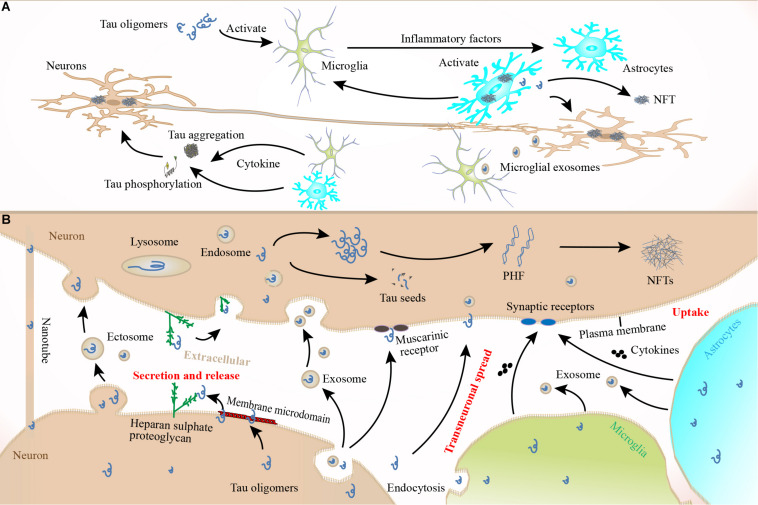FIGURE 4.
Tau pathology spread. Once released into the extracellular space, tau can be transported to connected cells via exosomes or ectosomes. Tau can also be transported to other cells by binding to muscarinic (M1, M3) receptors or synaptic receptors or via special structures such as membrane microdomains and HSPGs. There may also be nanotubes between cells, which can also spread tau oligomers. The plasma membrane may play a role in tau transmission through endocytosis-mediated uptake of tau oligomers. Microglia can also phagocytose secreted tau oligomers that are then spread to healthy neurons in exosomes, and astrocytes may be involved in this process. Both microglia and astrocytes can secrete cytokines that act on connected neurons, which further accelerates tau pathology. However, the specific mechanisms underlying the roles of microglia and astrocytes in tau pathology spread remain unclear. When tau oligomers or monomers are released by lysosome or ingested by recipient cells, they will misfold and form toxic seeds, PHFs, or NFTs. Once the recipient cells spread the pathological tau fragments to other cells, this perpetuates a vicious cycle that exacerbates AD.

